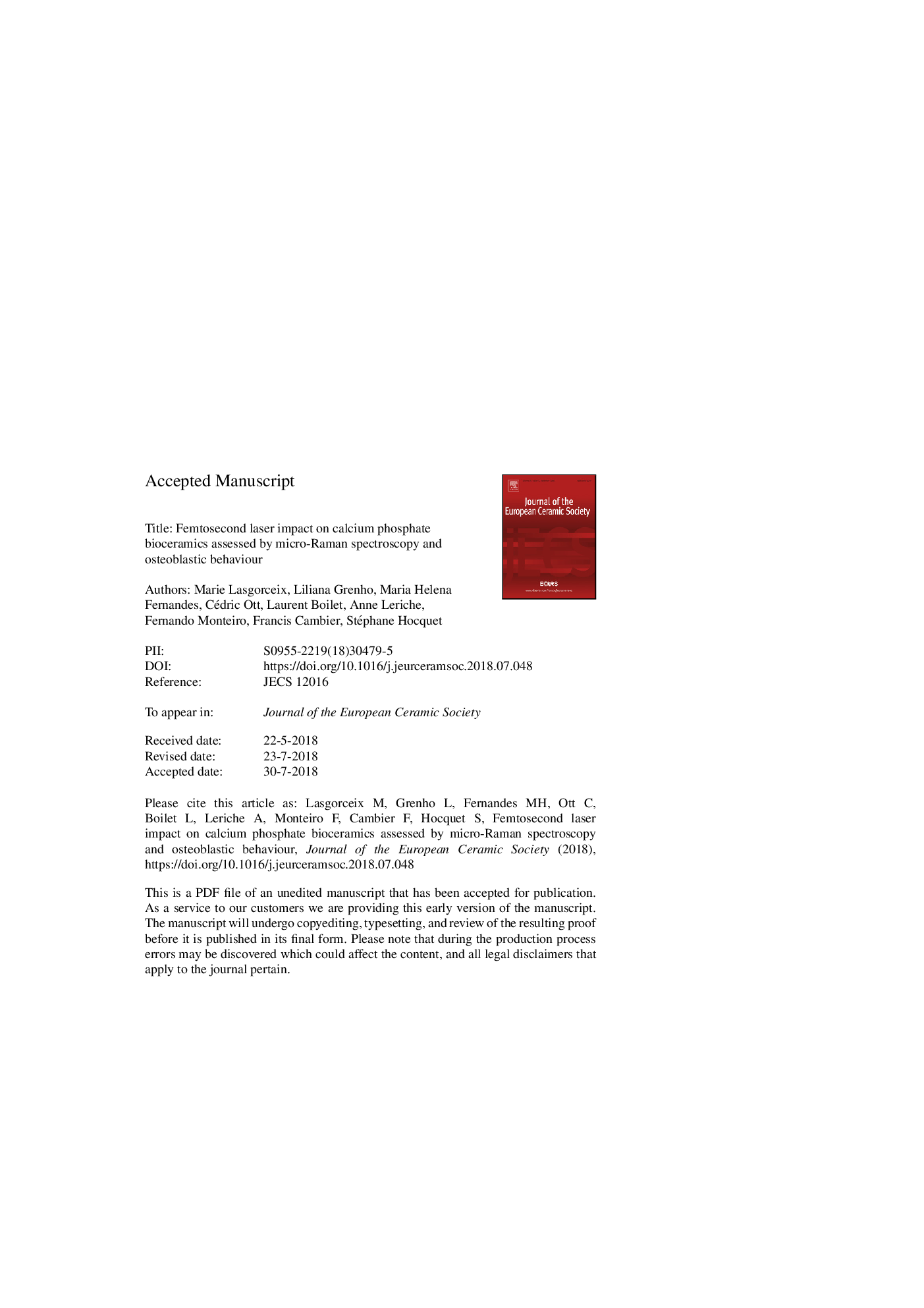| Article ID | Journal | Published Year | Pages | File Type |
|---|---|---|---|---|
| 10155505 | Journal of the European Ceramic Society | 2018 | 23 Pages |
Abstract
The present work is an investigation of the biological response to the presence of grooves 3â¯Î¼m deep, 15â¯Î¼m wide and spaced by 100â¯Î¼m, produced with femtosecond laser on β-tricalcium phosphate (β-TCP). The heat affected zone generated by the laser irradiation was investigated. Micro-Raman spectroscopy showed a transformation from β-TCP phase into α-TCP phase, localised inside the grooves. The X Ray Diffraction analyses, correlated with micro-Raman data, confirmed that the use of femtosecond pulsed laser enables to limit the thermal impact. A selection of optimised process parameters allowed to obtain β-TCP micro-patterned surfaces avoiding any phase transformation. The increase of the wettability with the micro-patterning, compared to smooth surfaces, was highlighted. An improvement of the osteoblastic proliferation was also demonstrated. Finally, the tendency of cell elongation along the grooves direction showed the ability of osteoblastic cells to adapt their morphology to the support topography on which they grow.
Related Topics
Physical Sciences and Engineering
Materials Science
Ceramics and Composites
Authors
Marie Lasgorceix, Liliana Grenho, Maria Helena Fernandes, Cédric Ott, Laurent Boilet, Anne Leriche, Fernando Monteiro, Francis Cambier, Stéphane Hocquet,
